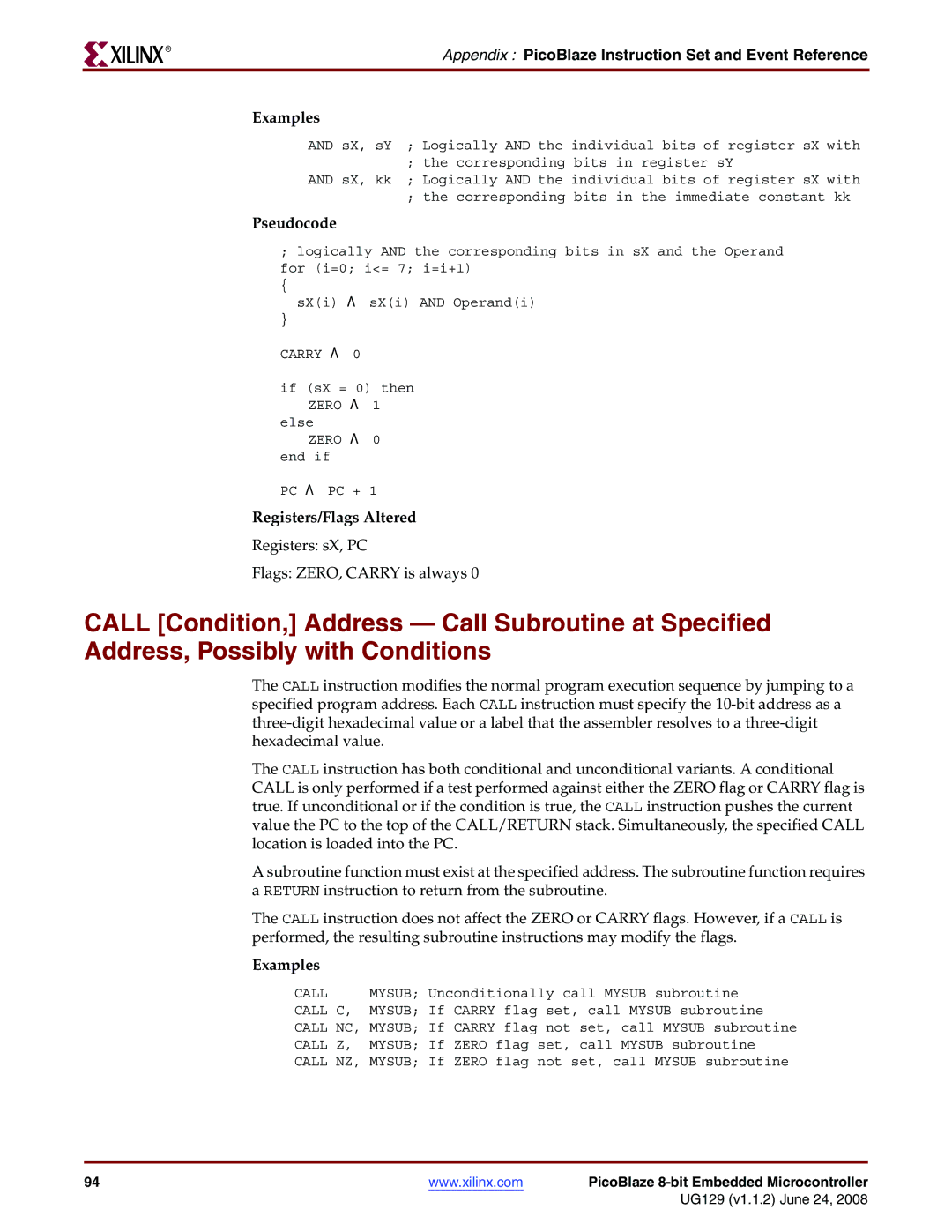
R
Appendix : PicoBlaze Instruction Set and Event Reference
Examples
AND sX, sY ; Logically AND the individual bits of register sX with ; the corresponding bits in register sY
AND sX, kk ; Logically AND the individual bits of register sX with ; the corresponding bits in the immediate constant kk
Pseudocode
;logically AND the corresponding bits in sX and the Operand for (i=0; i<= 7; i=i+1)
{
sX(i) Å sX(i) AND Operand(i)
}
CARRY Å 0
if (sX = 0) then
ZERO Å 1 else
ZERO Å 0 end if
PC Å PC + 1
Registers/Flags Altered
Registers: sX, PC
Flags: ZERO, CARRY is always 0
CALL [Condition,] Address — Call Subroutine at Specified Address, Possibly with Conditions
The CALL instruction modifies the normal program execution sequence by jumping to a specified program address. Each CALL instruction must specify the
The CALL instruction has both conditional and unconditional variants. A conditional CALL is only performed if a test performed against either the ZERO flag or CARRY flag is true. If unconditional or if the condition is true, the CALL instruction pushes the current value the PC to the top of the CALL/RETURN stack. Simultaneously, the specified CALL location is loaded into the PC.
A subroutine function must exist at the specified address. The subroutine function requires a RETURN instruction to return from the subroutine.
The CALL instruction does not affect the ZERO or CARRY flags. However, if a CALL is performed, the resulting subroutine instructions may modify the flags.
Examples
CALL | MYSUB; Unconditionally call MYSUB | subroutine | |||||
CALL C, | MYSUB; If CARRY flag set, call MYSUB subroutine | ||||||
CALL NC, | MYSUB; If CARRY flag not | set, call MYSUB subroutine | |||||
CALL Z, | MYSUB; | If | ZERO | flag | set, | call MYSUB subroutine | |
CALL NZ, | MYSUB; | If | ZERO | flag | not set, call | MYSUB subroutine | |
94 | www.xilinx.com | PicoBlaze |
|
| UG129 (v1.1.2) June 24, 2008 |
